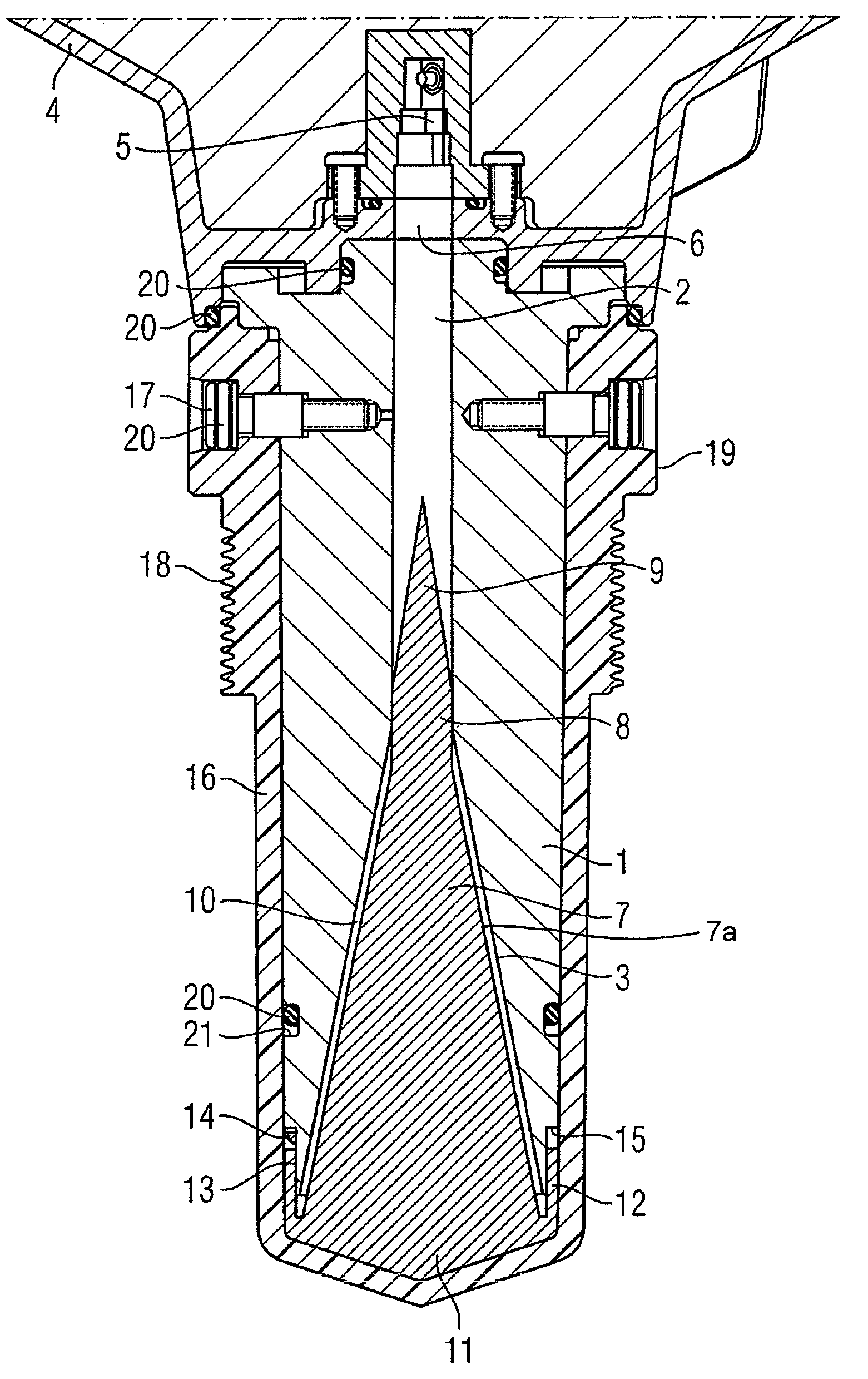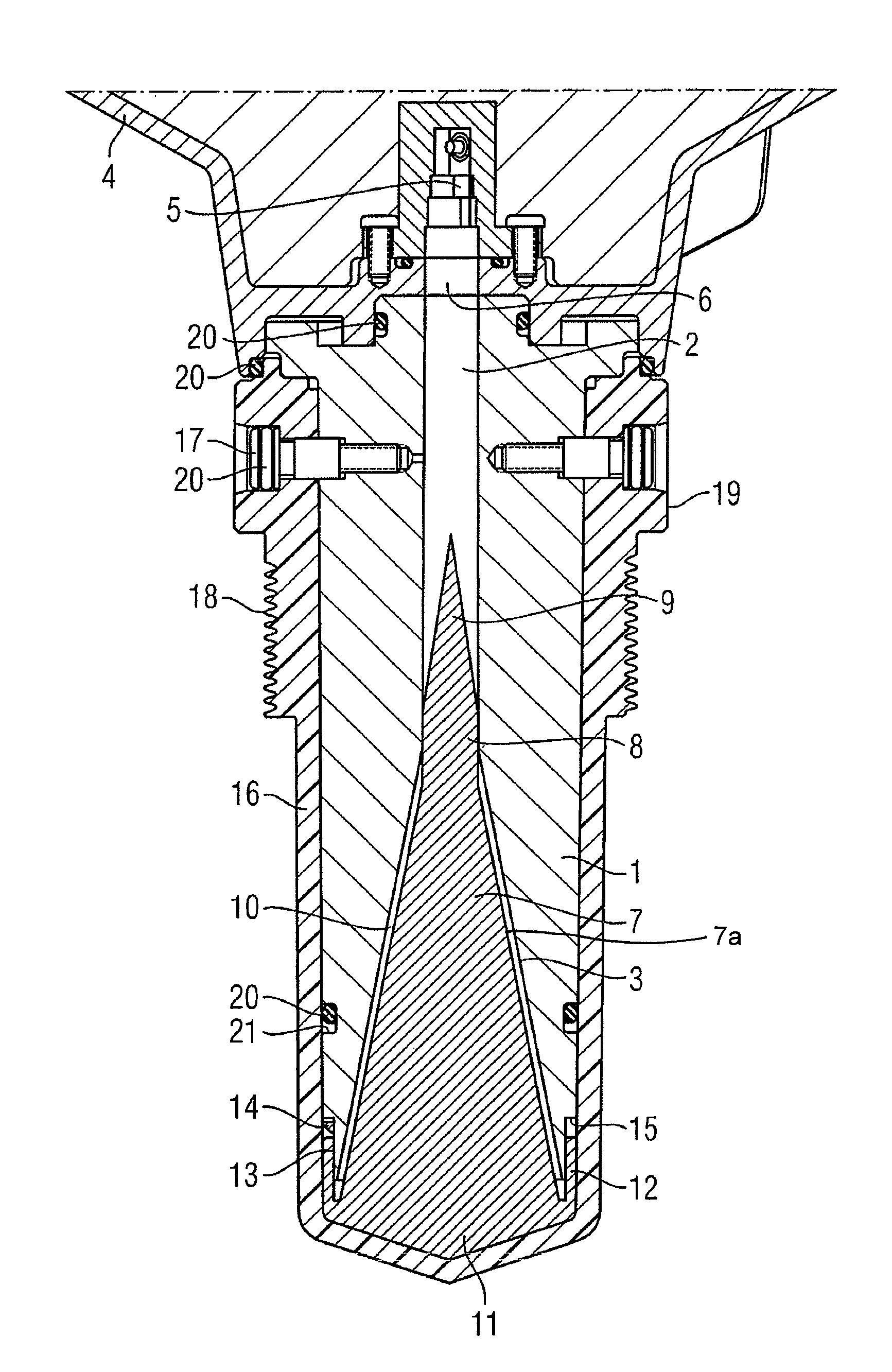Horn antenna for a radar device
a radar device and horn technology, applied in the direction of antennas, antenna details, electrical devices, etc., can solve the problems of sealing and cleaning problems, different thermal expansions of hollow horn sections and dielectric filling bodies, and the interference of the top of the vessel with the wanted echo of the filling product in the vessel, so as to facilitate the application of the cover
- Summary
- Abstract
- Description
- Claims
- Application Information
AI Technical Summary
Benefits of technology
Problems solved by technology
Method used
Image
Examples
Embodiment Construction
[0024]The horn antenna depicted in the FIGURE comprises a cylindrical metal body 1, preferably of aluminum, in which a tubular waveguide section 2 and an adjoining cone-like horn section 3 are formed. The metal body 1 is attached to a housing 4 of a radar level transmitter. As known from, e.g., U.S. Pat. No. 7,453,393 B2, a microwave energy signal supplied by a High Frequency (HF) module (not shown) located inside the housing 4 is transferred to a waveguide transition 5 that connects to a short section of a circular waveguide 6 machined in the wall of the housing 4. The microwave energy signal is forwarded to the tubular waveguide section 2 that has the same diameter as the circular waveguide 6. Centering elements are provided to ensure alignment and good electrical contact between the two waveguides 2, 6 to reduce reflections and maximize transferred power. The signal is directed to the horn section 3 from the tubular waveguide section 2.
[0025]The horn section 3 is filled with a di...
PUM
 Login to View More
Login to View More Abstract
Description
Claims
Application Information
 Login to View More
Login to View More - R&D
- Intellectual Property
- Life Sciences
- Materials
- Tech Scout
- Unparalleled Data Quality
- Higher Quality Content
- 60% Fewer Hallucinations
Browse by: Latest US Patents, China's latest patents, Technical Efficacy Thesaurus, Application Domain, Technology Topic, Popular Technical Reports.
© 2025 PatSnap. All rights reserved.Legal|Privacy policy|Modern Slavery Act Transparency Statement|Sitemap|About US| Contact US: help@patsnap.com


